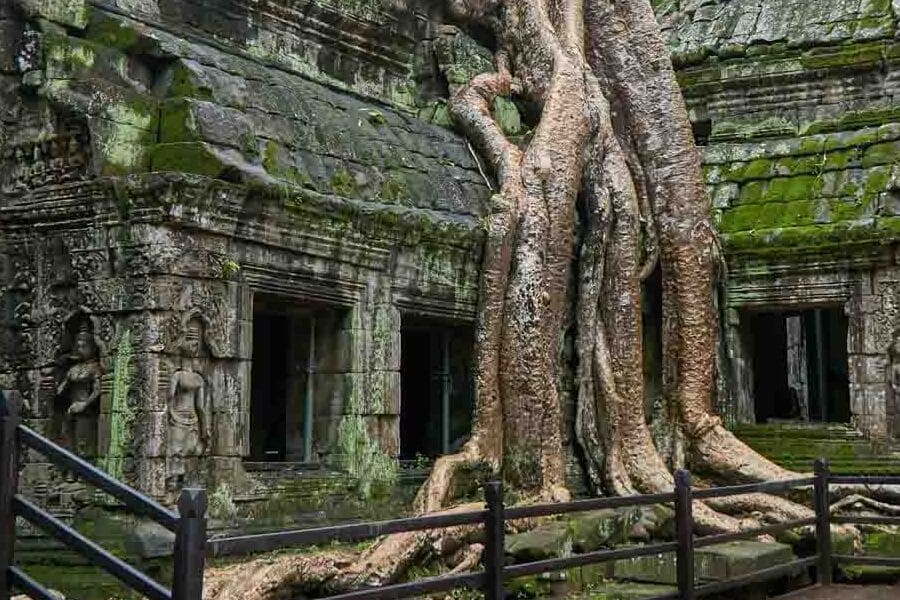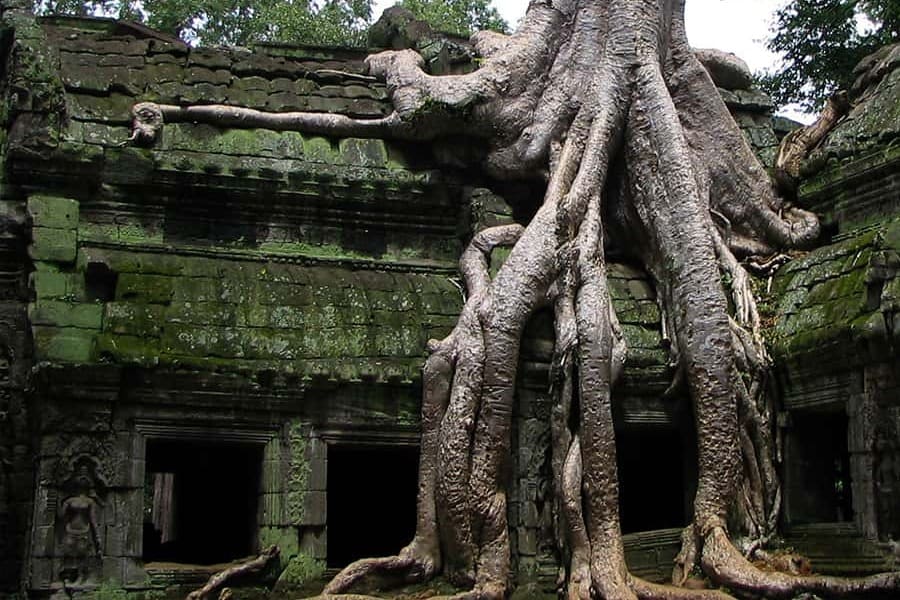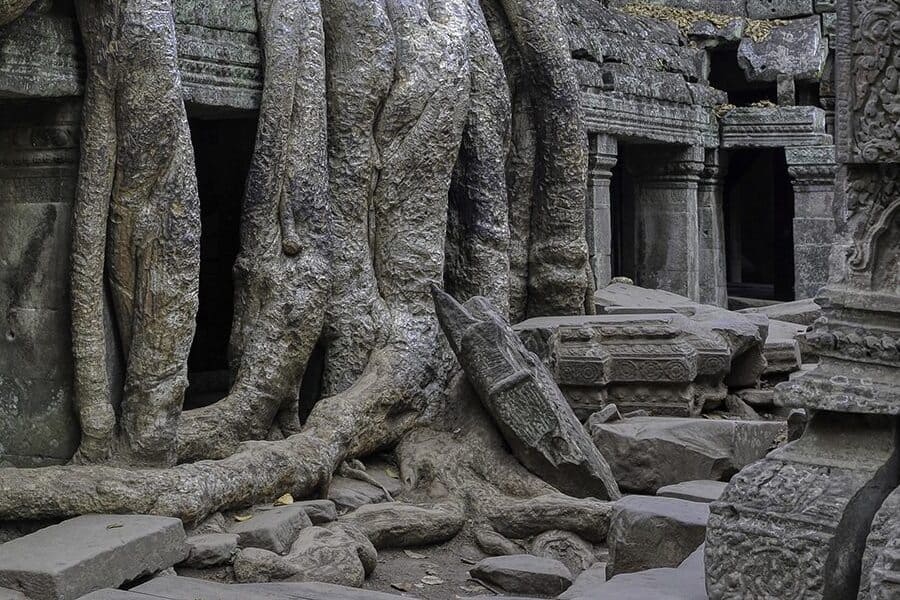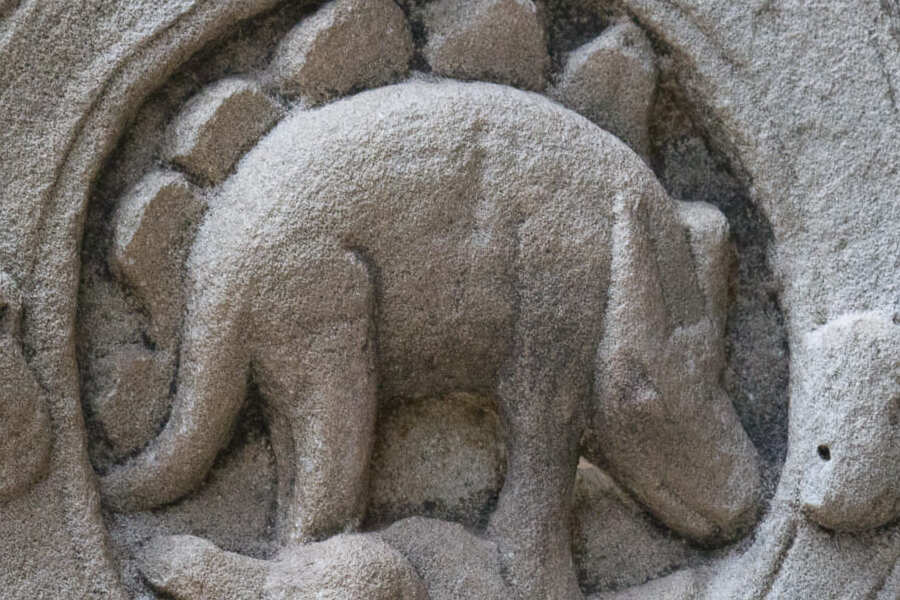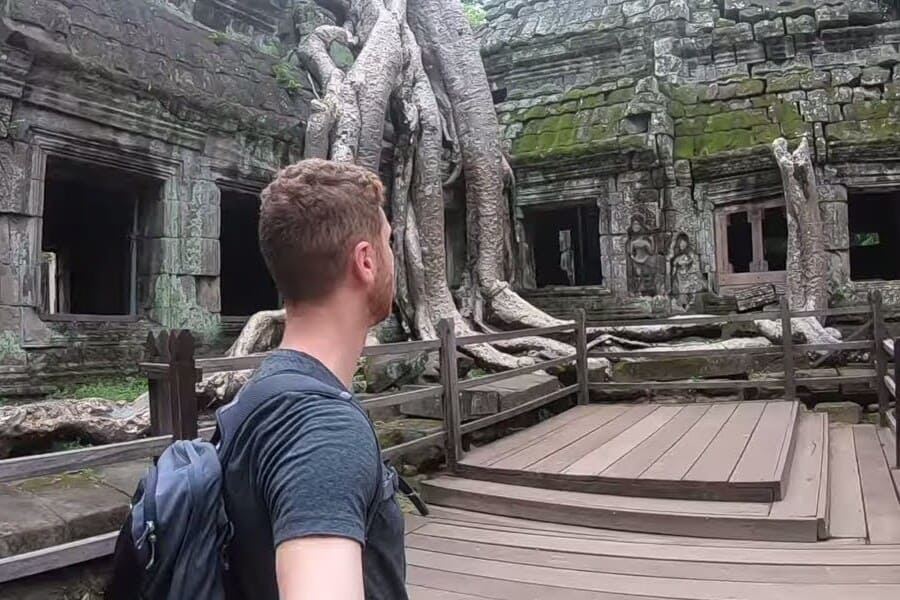Nestled amidst the ancient ruins of Angkor in Cambodia lies Ta Prohm, a temple shrouded in mystique and renowned for its surreal beauty. Famously featured in the Hollywood blockbuster film "Tomb Raider," Ta Prohm has captured the imagination of travelers and adventurers from around the world. Let's delve into the captivating allure of this jungle temple and uncover its secrets.
Contents
History and Origins of Ta Prohm
Ta Prohm, located within the Angkor Archaeological Park in Cambodia, holds a rich history dating back to the height of the Khmer Empire in the late 12th and early 13th centuries. Commissioned by King Jayavarman VII, one of the most prolific rulers of the Khmer Empire, Ta Prohm was originally known as "Rajavihara," meaning "Royal Monastery."
The temple complex was established as a Mahayana Buddhist monastery and university, serving as a center of learning and religious devotion. It was dedicated to the king's mother and symbolized the king's devotion to Buddhism and his desire to provide education and spiritual guidance to his subjects.
Constructed using sandstone blocks and laterite, Ta Prohm was designed in the classic Khmer architectural style, characterized by its intricate carvings, towering towers, and galleried enclosures. The temple complex originally spanned a vast area, encompassing not only the main temple structure but also surrounding buildings, courtyards, and reservoirs.
Throughout its history, Ta Prohm underwent periods of expansion, renovation, and decline. It flourished as a center of religious and cultural activity during the reign of King Jayavarman VII, but like many of the temples in the Angkor region, it eventually fell into disuse and was abandoned following the decline of the Khmer Empire in the 15th century.
Over the centuries, Ta Prohm was swallowed by the dense tropical jungle, with towering trees and creeping vines enveloping its crumbling walls and stone structures. The temple became a hauntingly beautiful fusion of nature and architecture, attracting the attention of explorers, scholars, and later, filmmakers.
In the late 20th century, efforts were made to stabilize and conserve Ta Prohm, with the aim of preserving its unique blend of archaeological and natural heritage. Today, the temple remains one of the most iconic and evocative sites within the Angkor Archaeological Park, drawing visitors from around the world to marvel at its enigmatic beauty and explore its storied past. Ta Prohm stands as a testament to the enduring legacy of the Khmer Empire and the inexorable march of time.
The Unique Architectural Features of Ta Prohm
Ta Prohm is renowned for its unique architectural features that set it apart from other temples in the region. Here are some of the distinctive elements that make Ta Prohm a captivating destination for Cambodia trips:
Integration with Nature: Perhaps the most striking aspect of Ta Prohm's architecture is its harmonious integration with the surrounding natural environment. Unlike many other temples at Angkor, Ta Prohm was deliberately left in a semi-ruined state during restoration efforts, allowing large trees, including silk-cotton and strangler fig trees, to grow amidst its ancient structures. The intertwining roots, branches, and foliage create a surreal and captivating scene, where nature and architecture coexist in a mesmerizing symbiosis.
Galleried Enclosures: Ta Prohm features a series of galleried enclosures connected by long, narrow corridors, creating a sense of mystery and exploration for visitors. The corridors are adorned with intricately carved sandstone reliefs depicting scenes from Buddhist mythology, including celestial dancers, apsaras, and mythological creatures. These carvings offer insight into the religious and cultural significance of the temple during its heyday.
Tower Sanctuaries:At the heart of Ta Prohm lies a cluster of tower sanctuaries, each crowned with prasats (towers) adorned with lotus bud finials. These towers serve as focal points within the temple complex and are believed to have once housed sacred relics or statues of deities. Visitors can climb the steep staircases to reach the upper levels of the towers and enjoy panoramic views of the surrounding jungle.
Bas-Reliefs and Inscriptions: Ta Prohm boasts a wealth of bas-reliefs and inscriptions that adorn its walls and corridors. These intricately carved reliefs depict a variety of subjects, including religious rituals, mythological stories, and everyday scenes of Khmer life. The inscriptions, written in ancient Khmer script, offer valuable insights into the history, culture, and religious practices of the Khmer Empire.
Despite its semi-ruined state, Ta Prohm has undergone extensive conservation and stabilization efforts to protect its fragile structures from further deterioration. Conservationists have worked to reinforce crumbling walls, stabilize leaning towers, and remove invasive vegetation without compromising the temple's unique character and charm.
Cultural Significance of Ta Prohm
Symbol of the Khmer Empire: Ta Prohm is emblematic of the Khmer Empire's architectural and religious achievements during its golden age. Constructed in the late 12th and early 13th centuries under the patronage of King Jayavarman VII, Ta Prohm served as a Mahayana Buddhist monastery and university. Its grandeur and scale reflected the power and prosperity of the Khmer Empire at its zenith.
Religious Center: As a place of worship and spiritual contemplation, Ta Prohm held significant religious significance for the Khmer people. The temple complex was dedicated to the king's mother and served as a site for religious ceremonies, rituals, and meditation practices. Its central sanctuary and tower sanctuaries were believed to house sacred relics or statues of Buddhist deities, attracting pilgrims and devotees from far and wide.
Cultural Heritage: Ta Prohm's architectural splendor and intricate carvings are a testament to the artistic and engineering prowess of the Khmer civilization. The temple's bas-reliefs and inscriptions depict scenes from Buddhist mythology, Khmer history, and everyday life, providing invaluable insights into the culture, beliefs, and customs of the Khmer people during the Angkorian period.
Iconic Filming Location: Ta Prohm gained international fame and recognition after its appearance in the Hollywood blockbuster film "Tomb Raider," starring Angelina Jolie. The temple's hauntingly beautiful setting, with its crumbling stone walls and towering trees, captured the imagination of audiences worldwide and helped to popularize Cambodia's cultural heritage on the global stage.
Tourism and Awareness: Ta Prohm's inclusion in popular media and its status as a UNESCO World Heritage Site have made it a major tourist attraction in Cambodia. Millions of visitors flock to the temple each year to marvel at its unique blend of architecture and nature, contributing to the country's tourism industry and raising awareness about the need for conservation and preservation efforts.
Conservation and Preservation: Efforts are underway to safeguard Ta Prohm and ensure its preservation for future generations. Conservationists, archaeologists, and government agencies are working together to stabilize the temple's structures, mitigate damage from natural elements, and manage visitor impact. These efforts reflect a commitment to protecting Cambodia's cultural heritage and maintaining the legacy of Ta Prohm for years to come.
Ta Prohm Tour Guide
The best time to visit ta Prohm
The best time to visit Ta Prohm is early in the morning shortly after sunrise or late in the afternoon, close to sunset. During these times, you can enjoy fewer crowds, cooler temperatures, and stunning lighting conditions that enhance the mystical atmosphere of this jungle temple. These hours also offer ideal opportunities for photography, capturing the temple's unique features and the interplay between ancient stone structures and sprawling tree roots. Planning your visit during these quieter times ensures a more immersive and memorable experience at Ta Prohm.
Transportation Options
- Tuk-tuk: This is a popular and convenient way to get around the Angkor complex. Tuk-tuks can be hired for half-day or full-day trips, and they can take you directly to Ta Prohm.
- Taxi: Taxis are also available in Siem Reap and can be hired for a more comfortable ride to Ta Prohm. Make sure to negotiate the fare before starting the journey.
- Bicycle: If you prefer a more active option, bicycles can be rented in Siem Reap, and it's about a 15-20 km ride to Ta Prohm from the city center.
- Tour Groups: Many tour companies offer guided tours to Ta Prohm and other temples within the Angkor complex. This option often includes transportation, entrance fees, and a guide.
Visiting tips for tourists
- Dress Code: Wear respectful attire covering shoulders and knees. This shows reverence for the sacredness of the site and adheres to local customs.
- Quiet Respect: Maintain a calm demeanor and avoid loud conversations or disruptive behavior. This allows all visitors to appreciate the tranquility of the temple grounds.
- Stay on Paths: Follow designated paths and refrain from climbing on the temple structures or touching delicate carvings and stone surfaces. Respect barriers and signs indicating restricted areas.
- Photography Etiquette: While photography is allowed, be mindful of others and avoid using flash photography inside the temple to preserve the ancient artwork and prevent any disturbance to other visitors.
- Trash Disposal: Carry out any trash you bring with you. Dispose of waste responsibly in designated bins outside the temple complex to help maintain cleanliness and preserve the natural beauty of the area.
- Respect Local Customs: Be aware of and respect any local rituals or practices observed by monks or worshippers at the temple. Observe quietly and without interference.
- Support Conservation Efforts: Consider making a donation or supporting responsible tourism initiatives that contribute to the preservation and upkeep of Ta Prohm and other Angkor temples.
Ta Prohm stands as a captivating testament to the intertwining of nature and ancient architecture, immortalized by its iconic overgrown trees that have grown intertwined with the temple's ruins. As the backdrop for scenes in the movie "Tomb Raider," this jungle temple continues to fascinate visitors with its mysterious atmosphere and unique charm. Exploring Ta Prohm offers a glimpse into Cambodia's rich history and the relentless power of nature reclaiming its place amidst human structures, making it a must-visit destination for adventurers and history enthusiasts alike.

